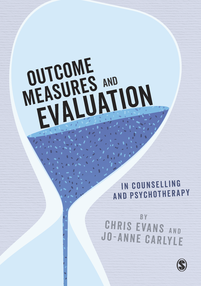Page created 1/1/15, updated 17/8/19 authorship MB & CE, licence: Attribution 4.0 International (CC BY 4.0) .
- Phase I: from concept to CORE
- 1970s to 1990s: the emergence of the idea
- 1990s: The need for a core outcome measure
- Phase IIa: Implementation and computer support systems
- Phase IIb: Developing CORE derivatives and translations
- 1998-2012: CORE derivatives
- 1998 onwards: translations
- The 2019 reboot of the CORE site
Phase I: from concept to CORE
1970s to 1990s: the emergence of the idea
The origins of CORE lie in a slightly obscure but seminal chapter by Irene Waskow entitled Selection of a core battery, published in 1975 and that arose out a 1970 American Psychological Association scientific conference on psychotherapy change measures. Waskow proposed the idea that there was merit in devising a core outcome battery that could be adopted by most researchers and yet at the same time recognising that they could also supplement this ‘core’ component with additional measures which were of special interest to particular groups of researchers. Although this proposal attempted to balance practitioner-driven selection of measures with some commonality of measurement across studies, the idea was not taken on board for a variety of reasons. However, by the mid- 1990s, the issue of outcomes was increasingly coming to the fore and a further conference on selecting a core outcome battery was held in the US that resulted in a substantial text published in 1997 entitled Measuring Patient Changes in Mood, Anxiety, and Personality Disorders: Toward a Core Battery and edited by Hans Strupp, Len Horowitz & Michael Lambert.
1990s: The need for a core outcome measure
These initiatives provided the momentum in the UK for devising a core outcome measure that could be adopted widely by both practitioners and researchers. While a vision of a core outcome struck a chord with many people, it also provoked concern, much of it quite understandable, as some sensed the potential for restricting choice and standardizing procedures. Two particular strands of thought related to (a) people wanting to use their own measure, and (b) a degree of ambivalence towards the existing outcome measures that were available. Practitioners tended to use either ‘home grown’ instruments or rely on measures imported from the US that tended to focus predominantly on symptoms. In addition, such measures were proprietary instruments that carried purchase costs and a bar on adapting them for specific needs in the UK. Hence, there was a need for a short and ‘free’ outcome measure that could be used widely in the UK.
Phase IIa: Implementing the CORE System in psychological therapy services and computerised support systems
1998-2001: Implementing CORE system
The CORE-OM and CORE System were launched at a national conference hosted in Leeds in 1998. Subsequently the CORE system was adopted by a large number of UK psychological therapy services, encouraged and supported by a spin-off company headed by John Mellor-Clark and supported initially by the University of Leeds Innovations (ULIS) Ltd.
2001-2014: CORE-PC and CORE Net
In 2001, John set up his own company – CORE Information Management Systems (CIMS) – and was joined by Alex Curtis Jenkins. CIMS supported the implementation and adoption of the CORE System in psychological therapy services through the development and release in 2002 of CORE-PC as an IT platform. At the same time, the existing Trustees – Michael Barkham, Chris Evans, and Frank Margison – were joined by Richard Evans. Richard’s charities, the Artemis Trust and the Counselling in Primary Care Trust, provided further funding for work on the CORE instruments and system. With the increasing dominance of the web, CIMS was able to complement the CORE-PC with a web-based platform, CORE Net. Such a web based client/server design was at the cutting edge of developments and CORE-Net came to supersede CORE-PC. This development provided practitioners with greatly enhanced tools for accessing and interrogating data regarding their patients. The focus of this strand of work centred on enhancing the quality of service at the level of individual practitioners as well as that of the whole service and then focused increasingly on monitoring of individual cases through session-by-session data collection.
Phase IIb: Developing a family of CORE derivatives and their translations
1998-2012: CORE derivatives
Overlapping with Phase IIa was research activity to develop derivations of the CORE-OM (the parent measure) in order to meet specific needs either in terms of length of the measure or the patient population. The following list comprises the derivations and the approximate year they became available in practice (which often occurred sometime prior to the initial publication documenting the derivate version).
- Short Forms A & B (1998): Two 18-item parallel versions developed at the same time as the CORE-OM and used in research settings
- GP-CORE (2005): For use with student or general populations (no risk items)
- CORE-10 (2007): An easy-to-use briefer version emphasising depression and anxiety and with a risk item
- CORE-5 (2008): A thermometer that could be used in conversation
- LD-CORE (2012): For people with learning disabilities
- CORE-6D (2012): a scoring system based on six items within the CORE-OM which delivers health utility (QALY: Quality of Life Adjusted Years) scoring for UK populations.
As of 2015, no new derivative versions of CORE are planned or envisaged. Publications on all versions exist with the exception of the CORE-5 (in prep.) and the Short Forms (which are referred to in the 2001 and 2002 articles on the CORE-OM as well as in the 2010 chapter summarising the CORE measures).
1998-present/continuing: CORE translations
Updated 30/1/19
The other major hallmark of Phase IIb has been the development of translations of the CORE-OM and its short forms into in over 30 languages and the YP-CORE into over 10 languages. See lists of approved translations:
We have evolved a now well-tested protocol for translations of the self-report measures and a slightly different one for the YP-CORE that covers involvement of young people in the process is also well established now though tends to have to adapt more to each language than the protocol for the CORE-OM (contact me (CE) to discuss that if you need a YP-CORE translation and might be willing to co-lead it).
Slowly, explorations of the psychometric properties of the translations, and of their local utility, are emerging.
The 2019 reboot of the site
This isn’t actually really important history, just a significant evolution, for details see https://www.coresystemtrust.org.uk/home/2019-site-reboot/.
Content checker target (not for humans!): pW6QTTHWk@UHY

